A Visit to the Barnes Foundation in Phil. PA
.jpg)
The Barnes Foundation
Do you know about the Barnes Foundation in Philadelphia? If you don’t, I recommend you learn about it and visit. It’s unique, fun, and quirky — qualities that I enjoy and respect!
Last month, I made my first visit to the Barnes, located near major museums in Philadelphia. Although I think of it as a museum, it was organized as a foundation with a unique educational focus, and it’s still that. But as a museum, it’s astonishing. It’s known primarily for its post-impressionist art, including a huge number of works by Renoir, Matisse, and Cezanne, plus others. It’s a destination visit, and you’ll run into tourists from all over the world. Until a few years ago, the foundation was in a suburb of Philadelphia and difficult to visit. But now it’s in the mainstream of tourism for Philadelphia.
It’s an intimate environment. I felt like I was being ushered into someone’s private collection at their home and not in a museum. And this relates to the founder Albert C. Barnes. He was born to a working-class family and was an American chemist and self-made millionaire. As Barnes’ company prospered and he benefited financially, he was able to explore other interests, particularly in the arts and education. He started collecting pieces in the early 1900s and in 1911, Barnes reconnected with his high school friend, William Glackens, who would later become a painter. He became one of Barnes’ early advisors in art collection and Barnes even sent him to Paris to purchase paintings for him.
.jpg)
Van Gogh “The Postman”
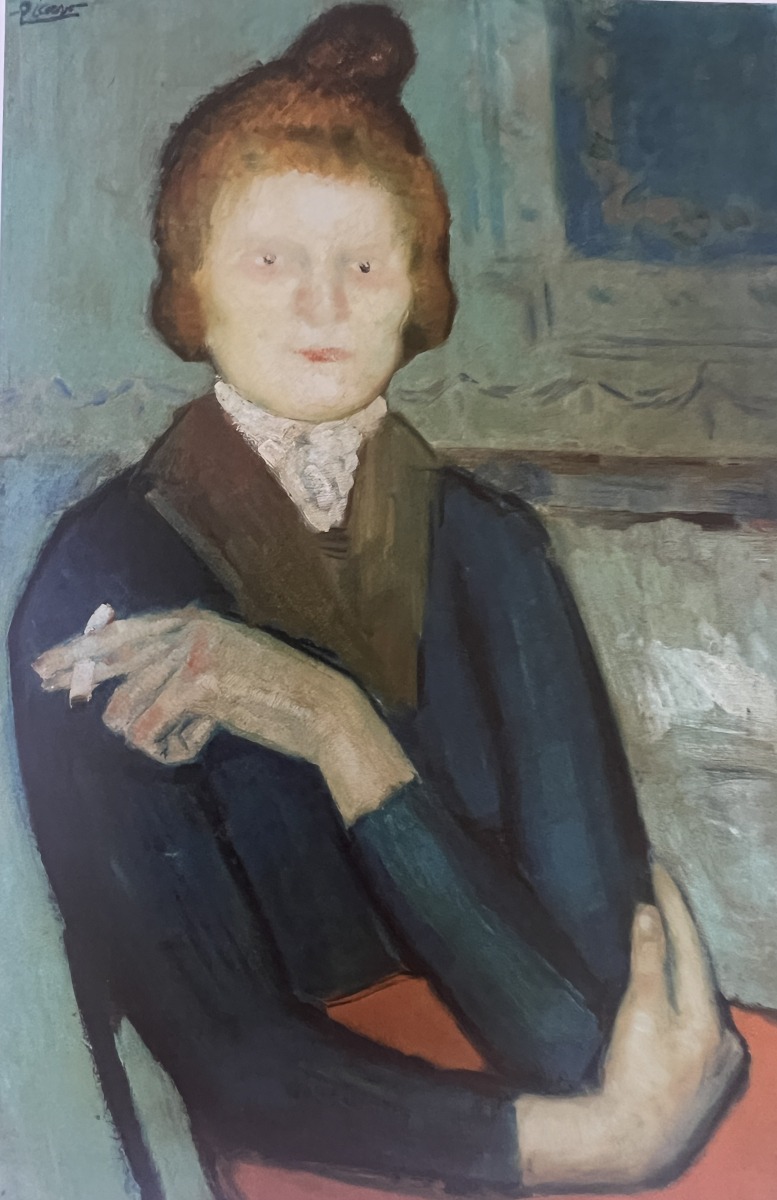
Picasso “Young Woman Holding a Cigarette”
Glacken purchased Van Gogh’s “The Postman and Picasso’s Young Woman Holding a Cigarette.” Meanwhile, Barnes traveled to Paris, where he purchased his first two paintings by Henri Matisse from Gertrude Stein, a leading art collector of modernism and a host of Paris Salon. By 1912, Barnes was already considered a serious art collector as he’d acquired dozens of artwork that cost about $20,000 (worth over a half a million today).
At the Barnes, I’ve been drawn to the way the art and artifacts – – including sculpture and ironwork – – are arranged in groupings, or ensembles. These were curated and positioned by the founder, Albert Barnes, and the displays have not been changed since his death in 1951. When the collection moved in 2012 to Philadelphia, the exhibits were reconstructed exactly as they were at the old location.
Because Barnes did not leave an explanation of why he positioned things as he did – – how he assembled the ensembles – – each one presents a puzzle or a question for the viewer. I like that; I enjoy studying the ensembles and attempting to find the patterns, similarities, incongruities, or other things there.
Here is an example of one. This is located in the Main Room West Wall. This is one of the more complex ensembles in the museum. It features Paul Cezanne’s ‘The Card Players,” Georges Seurat’s “Models (Poseuses),” Maurice Prendergast’s signature beach scenes, Cezanne’s “ Leda and the Swan,” and Henri Rousseau’s “View of the Quai at Asnieres.”
.jpg)
At the heart of this ensemble is Cezanne’s “The Card Player,” a masterpiece of Post-Impressionism that emphasizes stillness, geometric structure, and earthy tonality. It anchors the wall both physically and thematically, radiating a sense of gravitas and order. Alongside it, Seurat’s immense ‘Models” deploy pointillism to luminous effect, showing three female nudes in front of his earlier “A Sunday on La Grande Jatte.” This painting not only reflects his groundbreaking color science, but also offers subtle commentary on the role of models and art-making. Maurice Prendergast’s paintings in the ensemble offer a rhythmic counterpoint to the solemnity of Cezanne and the science of Seurat. Prendergast’s bright, mosaic-like brushwork and fragmented forms echo pointillist technique while injecting playful energy into the grouping. The inclusion of his work encourages viewers to compare use of color, spatial rhythm, and surface treatment among the artists-a key goal of Barnes’ ensemble strategy.
Cezanne’s “Leda and the Swan,” though smaller, brings mythological subject matter and a touch of sensuality to the ensemble. Its placement near “The Card Players” and Seurat’s “Models” deepens the ensemble’s exploration of the human figure-ranging from laborers and models to mythic archetypes. The contrasting treatments highlight Cezanne’s versatility, moving from robust rural masculinity to classical narrative rendered in his distinct palette and brushwork. Henri Rousseau’s “View of the Quai at Asnieres” stretches horizontally across much of the wall, creating visual unity through its linear perspective and serene depiction of the Seine’s embankment. Rousseau’s naive style contrasts sharply with the controlled realism of Cezanne and the scientific abstraction of Seurat. The painting’s gentle green and blue tones link visually to other pieces, reinforcing Barnes’ approach of harmonizing color and shape to cultivate the viewer’s ability to perceive formal relationships.
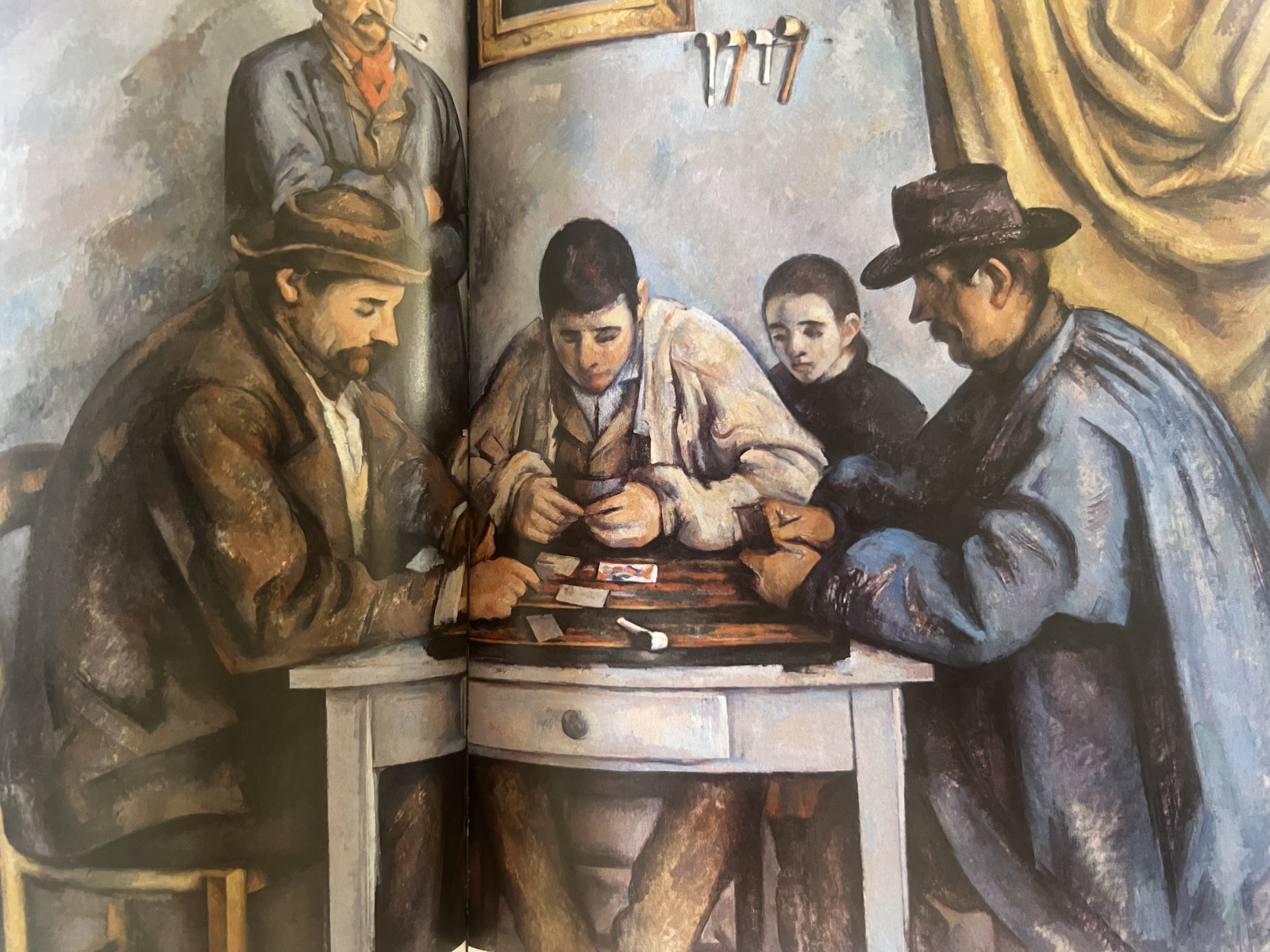
Cezanne’s ”The Card Player”
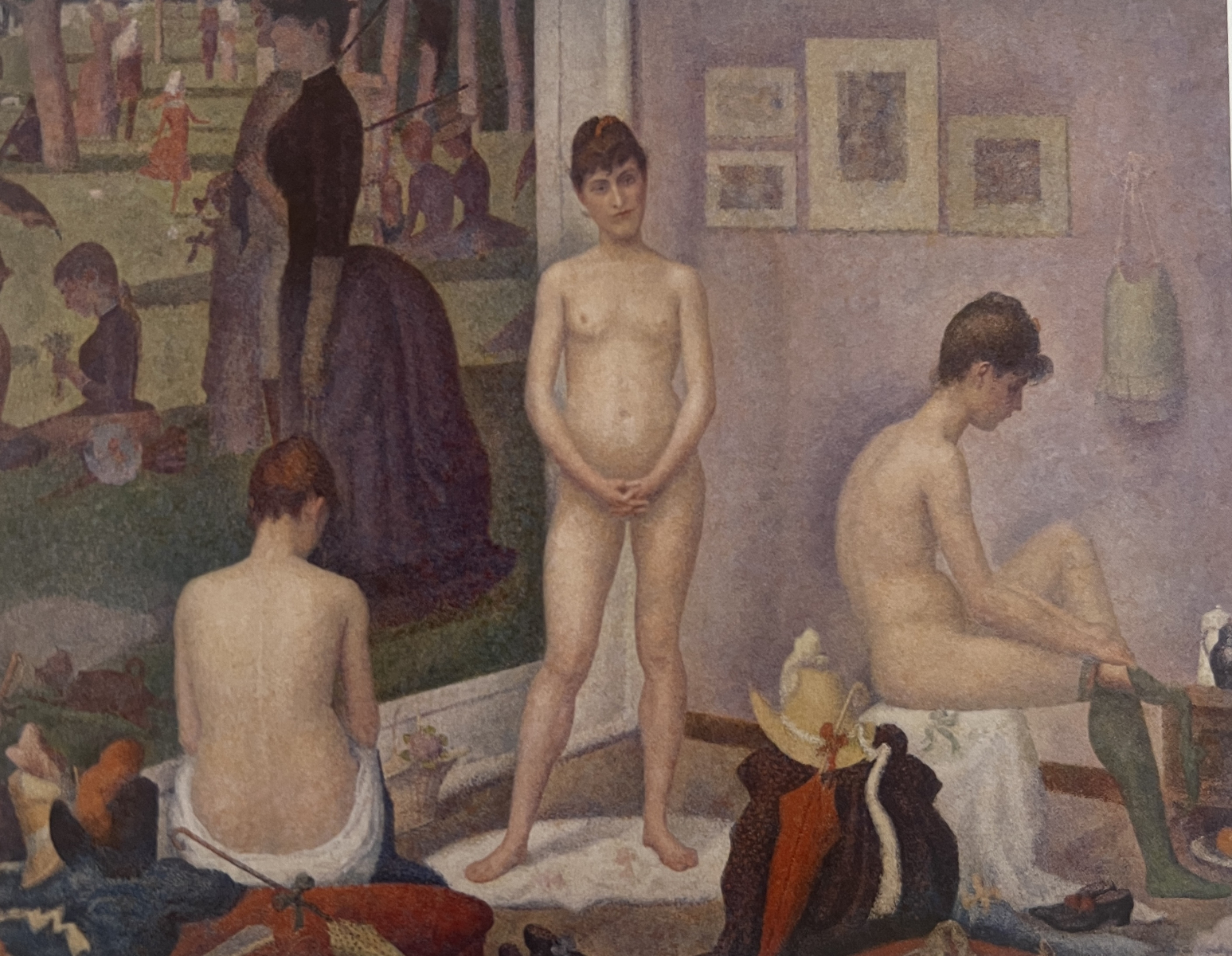
Seurat’s ”Models”
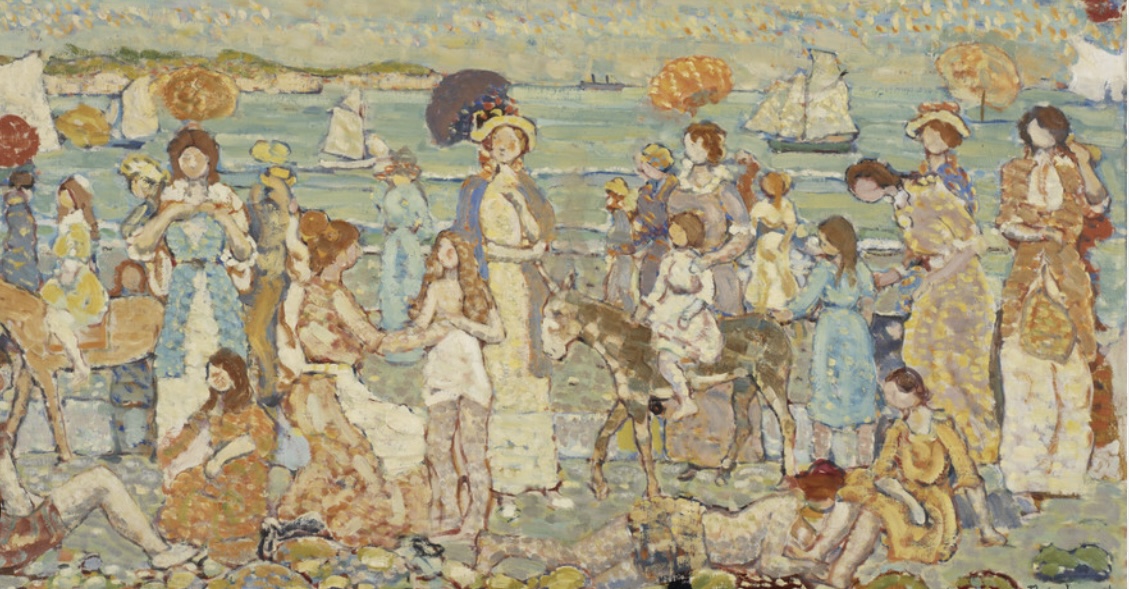
Maurice Prendergast “Beach Scenes”
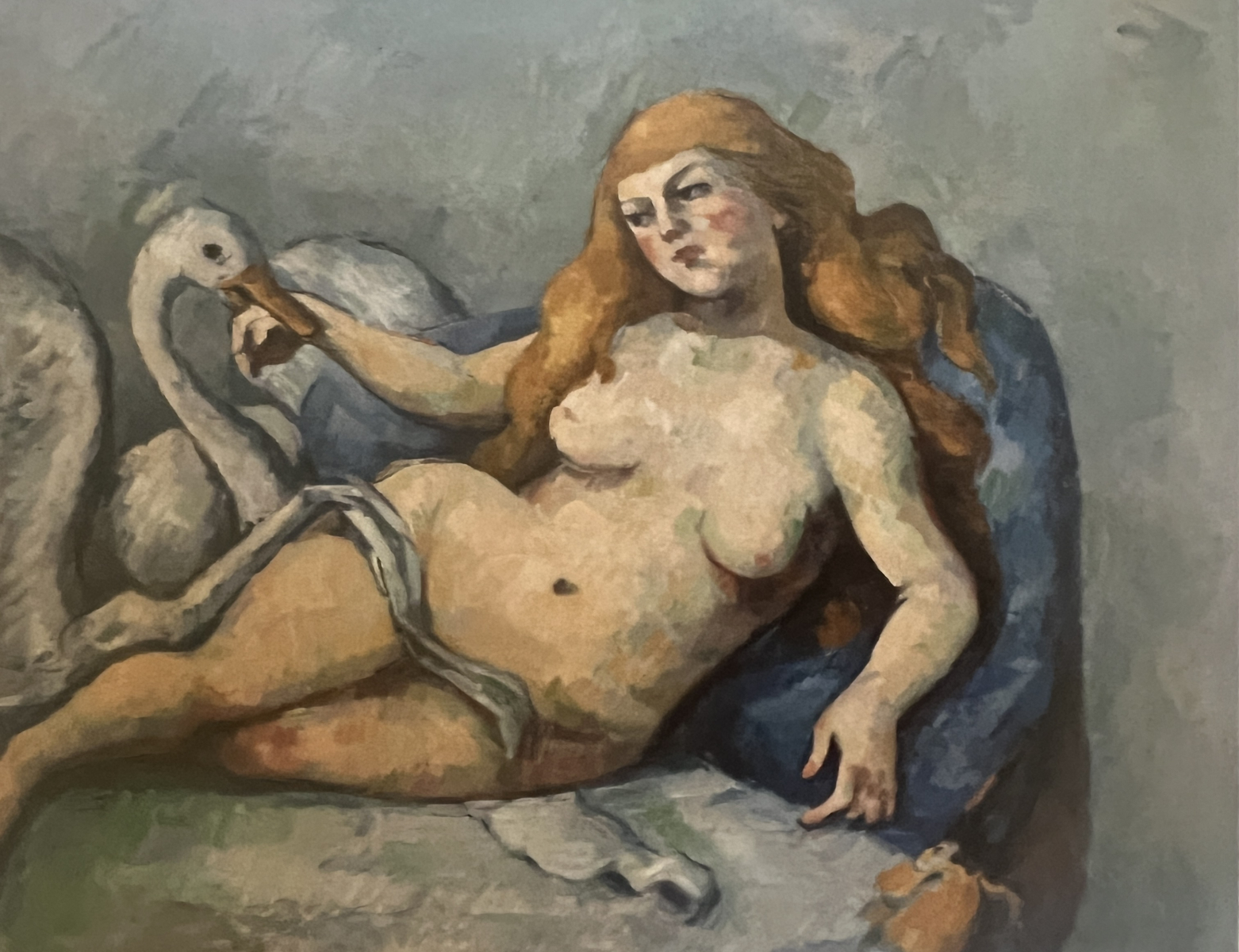
Cezanne’s ”Leda and the Swan”

Henri Rousseau’s “View of the Quai at Asnieres”
Overall, the West Wall’s ensemble is an orchestrated symphony of modern art innovation. Barne’s arrangement heightens dialogue among distinct artistic personalities and movements-Post-Impressionism, Neo-Impressionism, Naive art, and American Modernism. The juxtaposition of Cezanne, Seurat, Pendergast, and Rousseau within the same visual field invites viewers to discover connections in figure, landscape, myth, and technique, fulfilling Barnes’ educational philosophy of learning through direct, experimental engagement with art.
It is an engaging experience and there are many rooms to look at. You really do need a couple of days to get the full experience. I suggest the first day to just go through the whole collection and make note of what pieces and ensembles you are drawn to. Make the second a day to drill down on an ensemble or two and visually analyze them. It’s a very interactive and memorable experience.
Another bonus was discovering new artists (to me), Maurice Prendergast and his brother Charles. I first discovered Charle’s work. This piece in particular was a favorite. Although it was placed within a very busy ensemble, my eye went right to it.
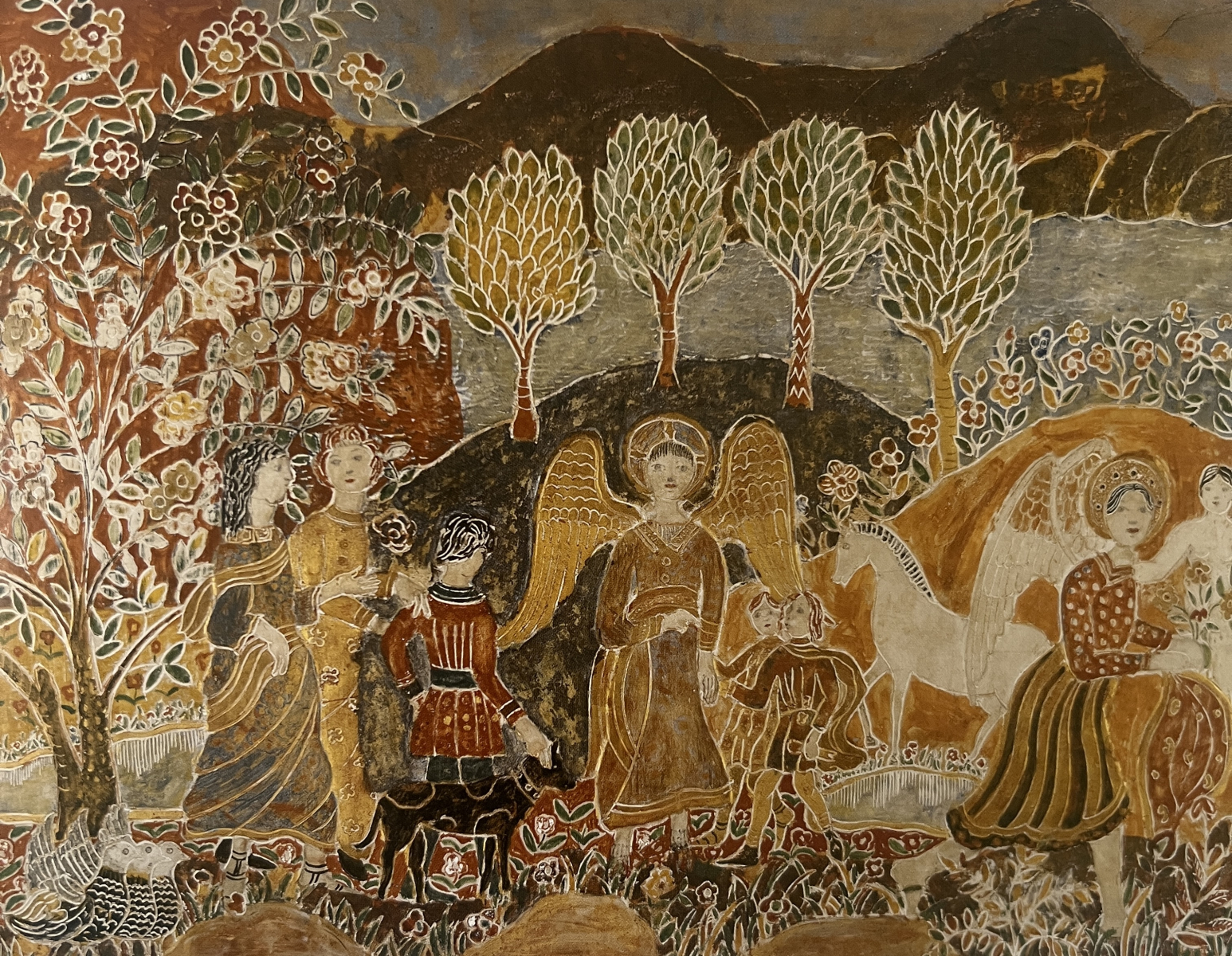
Charles Prendergast “Angels”
What I love about this is the technique of part carving, part painting. It is a called Japanning, a western imitation of oriental lacquer work in which figures were modeled in low relief in gesso, with metal (silver or gold leaf ) applied on a black or red painted background. On the surface the outline of his cartoon is transferred with charcoal, and the deeper lines are incised with gouges and chisels. Over this is spread several coats of gesso plaster, and while it is still wet, the more delicate lines are traced with a fine steel point. Over such figures and details to be gilded is spread a second coat of special plaster. And when all this has been thoroughly dried and all the roughness removed by sandpaper and pumice stone, it is ready for the application of gold or silver leaf and color. I love the whimsical nature and the patchwork of patterns. It’s delightful! I never heard of this artist before or this interesting technique. His brother’s work, Maurice has a whimsical appeal as well but is traditional painting.
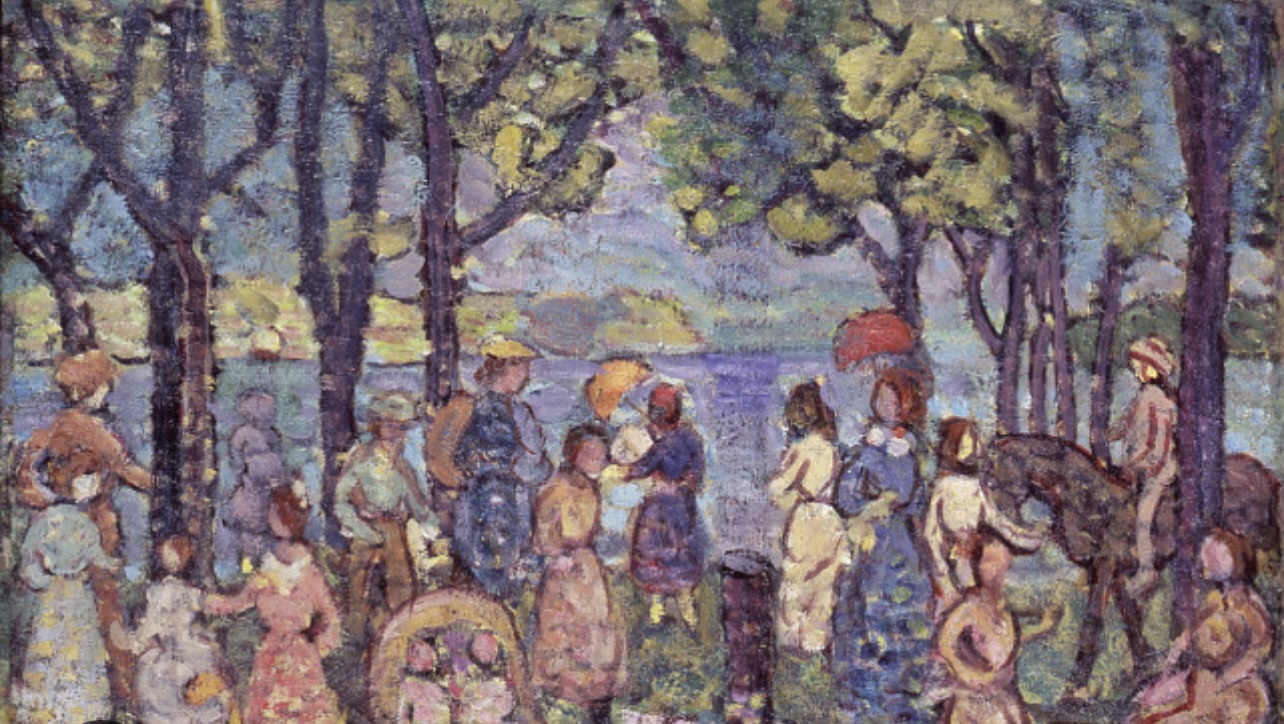
Maurice Prendergast “Summer”
The last thing I want to discuss is the educational component to the Barnes Foundation. Barnes emphasized the importance of learning “directly from paintings” rather than relying on academic texts or curatorial explanations. He believed true understanding of art came from observing the formal elements such as light, line, space and color, and interpreting an artist’s intention through sustained engagement.
Barnes developed a unique educational approach, now known as the Barnes Method, that prompted close looking and critical thinking. Modeled after scientific inquiry and influenced heavily by philosopher John Dewey’s belief in independent thought and democratic education, the method encouraged students to analyze and discuss artworks, drawing their own conclusions based on direct observation. This method was installed throughout his Foundation, with students, even his factory workers, participating in daily lessons focused on art and philosophy.
Barnes commitment to social justice shaped both his teaching and the demographics of his students. He actively excluded the traditional art-viewing elite in favor of common people. His programs aimed not only to democratize art appreciation, but also foster critical thinking and citizenship.
Barnes vision positioned art education as a tool for both personal growth and societal transformation. He chartered the Barnes Foundation not as a museum, but as an educational institution where art’s transformative potential could be realized through critical dialogue, direct experience, and rigorous visual analysis.
One last note on how Barnes’ art collection was received. Initially it was met with hostility and harsh criticism from the public and established art critics. When his collection-featuring modern artists like Matisse, Picasso, Soutine, Modigliani, and Pascin was exhibited at the Pennsylvania Academy of Fine Arts in 1923, reviews described the works as “incomprehensible masses of paint” and “trash”. The negative reaction was largely fueled by Barnes’ focus on avant-garde art, which clashed with the more traditional tastes of Philadelphia's art community and the general public at the time.
Barnes responded to critics with personal retorts and grew disdainful of institutions and casual art viewers, believing they did not appreciate art on its merits.
For years after this harsh reception, Barnes restricted public access to his collection, preferring a more educational and controlled viewing experience. I believe this reaction led him to the Barnes Method and a lifelong resentment towards the elite class.
He was a very complicated man and I haven’t even touched on the legal struggles of the Foundation. Below I have some links to some documentaries and other articles if you have the desire to dig even more. I hope you enjoyed this rather lengthy blog post. There was so much to share about it! Visit the Barnes!
Barnes and Beyond (The Art was never stolen)
https://youtu.be/4-nzuA9WvSI?si=15VmIWxJdvOL4cZ5
Barnes Foundation Virtual Tour
https://youtu.be/WQnCXIUmp-I?si=6cTROxgr_jnPcj9W
Movie- Art of the Steal
https://youtu.be/opOczQeFIb4?si=PnPr8TOOF1lEGjrR
Archives
- October 2025 (1)
- September 2025 (2)
- August 2025 (1)
- December 2020 (1)
- October 2019 (1)
- August 2018 (1)
- December 2016 (1)
- June 2015 (1)
- August 2014 (5)






